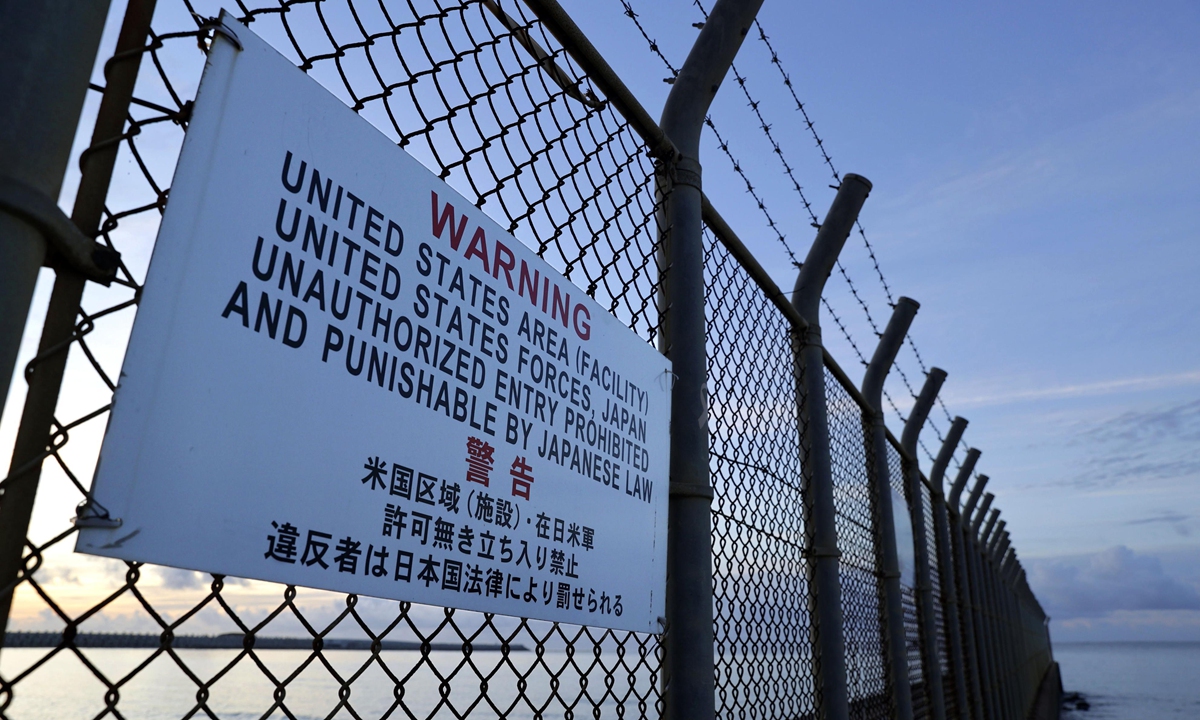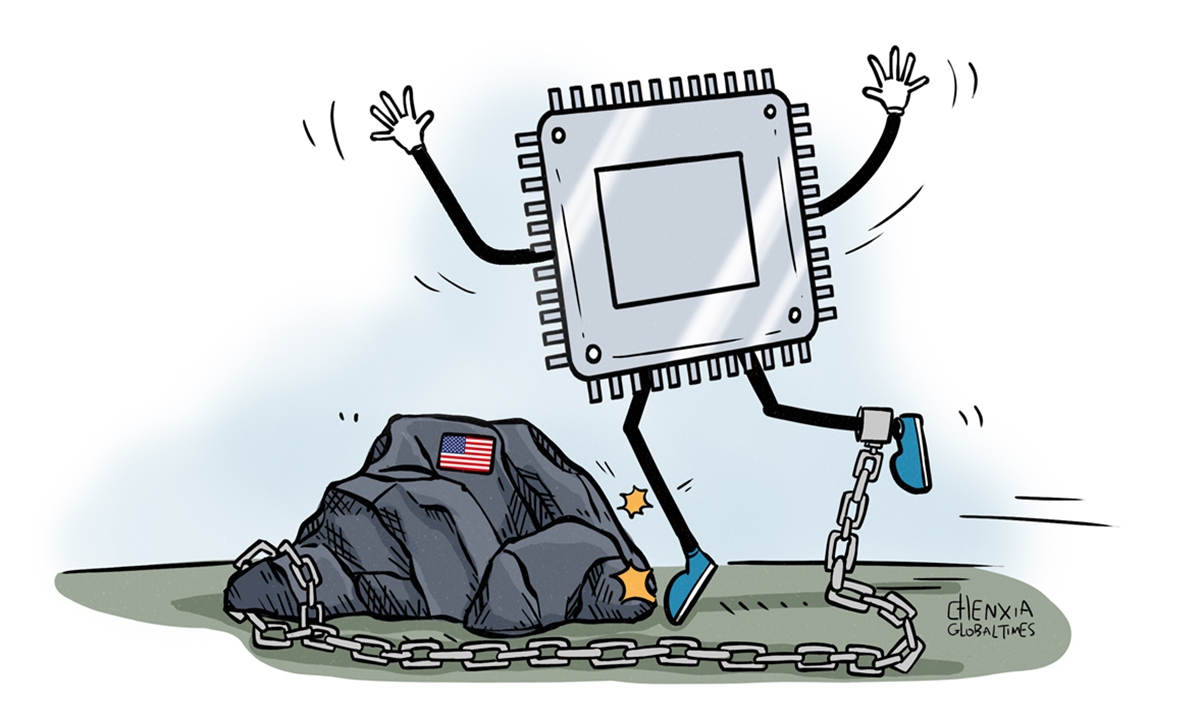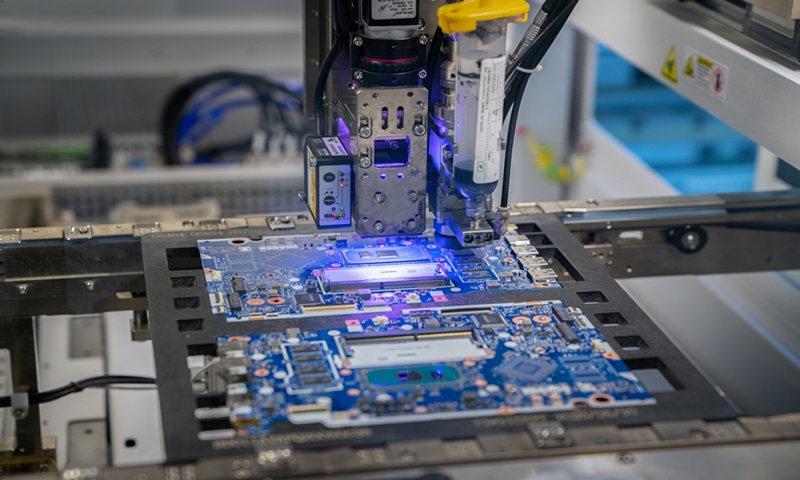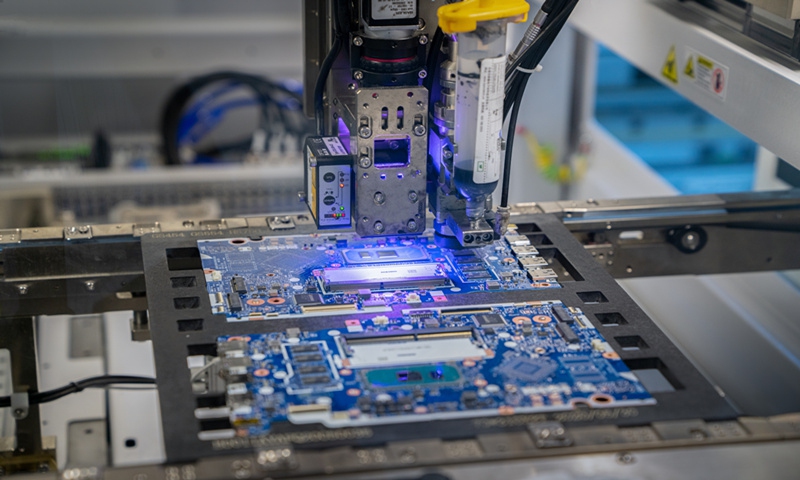
Photo taken on August 24, 2022 shows a warning sign by US troops in Japan placed at the Henoko coastal area of the Okinawa Prefecture. File Photo: VCG
May 15 marks the 52nd anniversary of Okinawa’s “return” to Japan. Recently, Okinawan residents discovered the presence of Dutch naval soldiers in the training grounds of the US military base in Okinawa but the Japanese Ministry of Foreign Affairs may have been unaware of this beforehand. On Tuesday, Okinawan residents who discovered this matter spoke exclusively to the Global Times, detailing the sequence of events.
Despite accounting for only 0.6 percent of Japan’s total land area, Okinawa hosts over 70 percent of the US military bases in Japan. Over the years, Okinawan residents have continuously protested against the presence of these bases, but the Japanese government has paid little attention and has instead accelerated military deployment.
Akino Miyagi, 45, was born on Hamahiga Island in Uruma city, Okinawa Prefecture. She began participating in anti-base protests during high school. As an entomologist, she discovered during her research in 2011 that the presence of US military bases, including artillery shells, had a detrimental impact on the local ecology. Since then, she has been actively involved in activities opposing US military bases as an environmental researcher.
Miyagi told the Global Times that in late March, while conducting her regular protests at the US military’s Northern Training Area in Okinawa, she noticed several soldiers wearing different styles of camouflage uniforms on military trucks. Typically, after leaving the training area, US military trucks return to the base. However, on that occasion, she personally witnessed several trucks entering and leaving the training area, deviating from their usual route.
The Northern Training Area is located in Kunigami District, northern Okinawa Prefecture. It is a US military base and the largest military exercise field in Okinawa Prefecture. In 1998, it was renamed the Jungle Warfare Training Center (JWTC).
After noticing the unusual situation, Miyagi logged into the website of the Defense Visual Information Distribution Service (DVIDS), a subunit of the US Department of Defense, to investigate.
One article on the website revealed that from March 10 to 24, the US military and the Dutch Marines conducted training at the JWTC in Okinawa called the “Jungle Leaders Course.” It also noted that this training aims to prepare the US and its allies for combat in challenging jungle environments.
Miyagi told the Global Times that she immediately contacted the Okinawa Defense Bureau, who claimed that they were unaware of the presence of Dutch soldiers training at the US military training grounds in Okinawa.
Miyagi said that various indications suggest that the Japanese Ministry of Foreign Affairs may also have been unaware of this matter beforehand.
According to the Okinawa Times, when asked for a response to related inquiries, the Ministry of Foreign Affairs said that it had confirmed with the US and Dutch military that indeed three Dutch soldiers entered the US military’s Northern Training Area in Okinawa in March. However, the ministry claimed that their purpose was for inspection rather than “training.”
When asked if they were aware of this beforehand, the Ministry of Foreign Affairs’ response was ambiguous, stating that “individual cases cannot be generalized.” It is reported that the Dutch soldiers disguised themselves as ordinary passengers and entered Japan via commercial flights at civilian airports.
Okinawan residents have long suffered from the troubles brought by US military bases. In recent years, with the significant rightward shift in the Japanese government, there has been an acceleration of military deployments in Okinawa, leaving local residents living in fear.
According to the Okinawa Ryukyu Shimpo, a local newspaper, the DVIDS released information saying that this US military training is aimed at helping allies familiarize themselves with the operational environment. This suggests that in the future, it is not unlikely that soldiers from other countries may enter the US military bases in Okinawa for combat training, raising concerns about the normalization of the entry of third-country forces into these bases.
Okinawa Governor Danny Tamaki said that the US military did not inform the prefecture in advance about the nature of the training they would conduct. Regardless of the specifics, joint training between the US military and foreign forces will not alleviate the burden on the bases.
As of press time, the Global Times found that the article on the website of the DVIDS had removed the mention of the Dutch soldiers.
The US military has only two facilities globally for jungle warfare training, one in Hawaii and the other being the Northern Training Area in Okinawa. The environment within the Northern Training Area is highly similar to that of several other countries, giving it a clear advantage in regular military training, according to Miyagi.
For instance, there are no infectious diseases like malaria in the jungle, no fierce beasts like tigers, strong radio signals, and it’s relatively easy to obtain water from the mountains, rivers, and rainfall. Even in the event of injuries, the distance to hospitals is not far.
Miyagi also noted that the “Jungle Skills Course” typically involves soldiers entering the jungle on Sundays to begin a five-day training program, ending on Fridays. The entire process must be conducted collectively, aiming to reinforce soldiers’ awareness of unconditional obedience to commands.
The Okinawa Ryukyu Shimpo reported that the Japanese government claims to allow third-country soldiers to enter the US military bases in Okinawa under certain circumstances but has not publicly disclosed specific criteria. In 2016, two British Royal Marines participated in training with the US Marine Corps at Camp Schwab and Camp Hansen in Okinawa. In 2017, the Philippine Navy trained with the US Navy at Camp Schwab in Okinawa. Instances of third-country military forces training at US military bases in Okinawa have occurred, but only a few of these cases have been made public.
The newspaper also mentioned that to counter China, the US Marine Corps has been conducting training for the so-called “Expeditionary Advanced Base Operations” (EABO) at the Northern Training Area. It is not unlikely that NATO member countries may also join this training in the future. Allowing foreign military forces to enter Okinawa without local knowledge may bring new concerns for the local residents.
Miyagi said that it is unacceptable for foreign military personnel to enter the US military bases in Okinawa for military training disguised as ordinary passengers on commercial flights through civilian airports. Even though Japan and the US have signed the US-Japan Status of Forces Agreement, many issues remain unresolved.
Moreover, there are no relevant agreements between Japan and the Netherlands, meaning that it may be difficult to hold Dutch soldiers accountable for any incidents in Okinawa. If this phenomenon becomes normalized, it will undoubtedly exacerbate tensions in Okinawa, said Miyagi.
Miyagi told the Global Times that the reason such situations occur in Okinawa is mainly because, from the US perspective, using US military bases in Germany and other countries comes with many restrictions, while those in Japan, especially in Okinawa, can be used “as they want.”
Despite the extremely negative nature of this event, the reality is that the Japanese government simply doesn’t care about what Okinawa is going through, said Miyagi.




